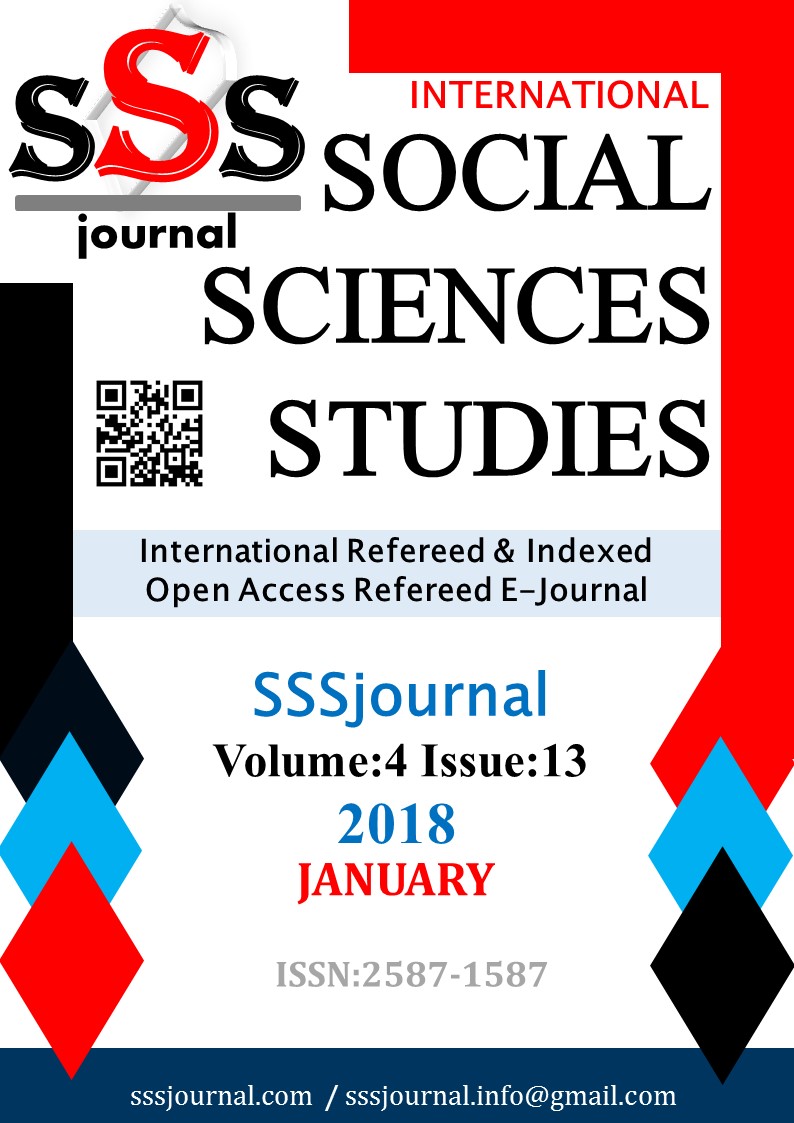Author :
Abstract
Portre, sanatın tarihi içerisinde çok önemli bir yer kaplar. İnsanın içinde yaşadığı sosyal ortamı tanıma ve kendini o ortama kabul ettirme çabası içinde portreler önemli birer mihenk taşıdır. Yüzyıllar boyu portreler hem toplumları şekillendirmiş, hem de ait oldukları toplumsal yapının çözümlenmesinde önemli roller üstlenmişlerdir. Bireyin öteki ile yüzleşme doğrultusunda çıktığı yolculukta, ona bir referans noktası sağlamışlardır. Kültürlerin kat ettiği yol ve gelişim süreci ile birlikte portre üretimi de farklılaşmış ve çeşitlenmiştir. Fotografik üretim sürecinin başlaması ile birlikte de bu çeşitlenmenin artış kaydettiği gözlemlenir. Çağdaş sanat bağlamında da fotografik portrede deadpan estetiği önemli bir yer kaplamaktadır. Bu çalışmada Gustav Jung'un persona kavramı üzerinden portrenin yolculuğu incelenerek bu kavramın deadpan fotoğraf estetiğindeki önemine ve gerçeklik ile olan bağlarına değinilecektir. Sanatsal üretim aşamaları içinde anlamın oluşturulması ve bu oluşturulan anlamın gerçeklik ile bağlarının kurulması noktasında sanatçı, modeli ve izleyicinin persona kavramı özelinde katkısı irdelenerek çeşitli sanatçılardan örnekler sunulacaktır. Özellikle İki dünya savaşının ardından içine düşülen hiçlik bunalımı ile bir kez daha önem kazanan gerçeklik ve onun sunuluş biçimi deadpan estetiği ve persona kavramı üzerinden irdelenecektir.
Keywords
Abstract
Portraiture has a huge place in history of art. This genre is acknowledged as a cornerstone through out the struggle of mankind about being able to define his social environment and being able to make her/himself accepted. For centuries portraiture has played a very important role in both shaping and analyzing the societies. During the confrontation journey of oneself to other portraiture has provided a significant reference point. With the historical development process production of portrait has become more different and more diverse. One could easily observe that this diversity has increased with the evolution of photographic production process. Today within these various paths deadpan aesthetics has taken up a major space. In this contribution the journey of portraiture through the concept of persona by Gustav Jung will be examined and in addition the importance of this concept in the context of deadpan photography and its connections to reality are going to be discussed. In particular the role of the artist, model and viewer and their personas will be analyzed as a component at the point of creating the meaning in the stages of artistic production and bounding this very meaning to the reality. There also will be some major examples of significant artists. The rised importance of search for reality and the way of its representation especially with the nihilism which devoured the mankind after two world wars are goint to be the major arguments held here in the context of deadpan aesthetics and persona.
Keywords
- Avril, N. (2005). Yüzün Romanı,(Çev:Sema Rifat) Doğan Kitap, İstanbul.
- Avril, N. (2005). Yüzün Romanı,(Çev:Sema Rifat) Doğan Kitap, İstanbul.Budak, S. (2000). Psikoloji Sözlüğü, Bilim ve Sanat Yayınları, Ankara.
- Connor, S. (2001). Postmodernist Kültür, (Çev: Doğan Sahiner),Yapı Kredi Yayınları, İstanbul.
- Cotton, C. (2004). The Photograph As Contemporary Art, Thames &Hudson Publishing, London.
- Çoban,B.(2003). “J. Lacan: Aynalar Şövalyesi ya da Bilinçdışının Kaşifi”.(Ed. Prof. Dr. Nurdoğan Rigel), Kadife Karanlık I: 20. Yüzyıl İletişim Çağını Aydınlatan Kuramcılar, ss. 277-294 Su Y., İstanbul.
- Duyndam, J. (2008). "Girard and Levinas, Cain and Abel, Mimesis and the Face", Journal of Violence, Mimesis, and Culture, Michigan State University Press, (15/16): 237-248.
- Ekici, D.K. (2013). "Fayyum Portreleri", Karabük Üniversitesi Sosyal Bilimler Enstitüsü Dergisi, 3(1):27- 36.
- Ertangil,T. (2013), "Ayna Evresi, Aydınlanma ve Kendi-olma Üzerine", www.ertangil.com- Felsefi Değiniler.
- İzmir,M. (2016), "Dostoyevski'nin Öteki Romanı ve Lacan'ın Öteki Kavramı" , Libido Dergisi, http://www.libidodergisi.com/dostoyevskinin-oteki-romani-ve-lacanin-oteki-kavrami/
- Klein,J. (2001). Matisse Portraits , Yale University Press, New Haven.
- Klimek,M. (2011). "Deadpan Photography; An Expressive Genre and an Invitation to the Discussion. A Call for New Definition" BA Thesis, Edinburgh Napier University, Edinburgh.
- Leppert, R. (2009), Sanatta Anlamın Görüntüsü İmgelerin Toplumsal İşlevi. (Çev.: İsmail Türkmen), Ayrıntı Yayınları, İstanbul.
- Özkan, H. (2013). "Portre Resminde Biçim Bozma", Yüksek Lisans Tezi,Yeditepe Üniversitesi, Sosyal Bilimler Enstitüsü,İstanbul.
- Özkanlı, Ü. (2011). "Sanatta Bir Kimlik Problemi Olarak Portre", Sanatta Yeterlik Tezi, Kocaeli Üniversitesi, Sosyal Bilimler Enstitüsü, Kocaeli.
- Schneider, N.( 2002). The Art of the Portrait, Taschen, Köln.
- Seber, M. (2015). "Reklam Metinlerindeki Psikolojik Unsurların Freud ve Jung Açısından Analizi",Yüksek Lisans Tezi, Marmara Üniversitesi Sosyal Bilimler Enstitüsü, İstanbul.
- Shore, S. (2006). The Nature of Photographs, Phaidon, London.
- Vinegar,A.(2009), "Ed Ruscha, Heidegger, and Deadpan Photography", Art History, 32: 852–873.
- Walz, J. F. (2010) "Performing the new face of modernism: Anti-mimetic portraiture and the American Avant -garde 1912–1927", Doktora Tezi, University of Maryland, College Park.
- Wittgenstein, L. (1980). Culture and Value,(Trans.: Peter Winch), University of Chicago Press, Chicago.
- Zarzycka, M. (2016). Gendered Tropes in War Photography: Mothers, Mourners, Soldiers, Routledge, London.
